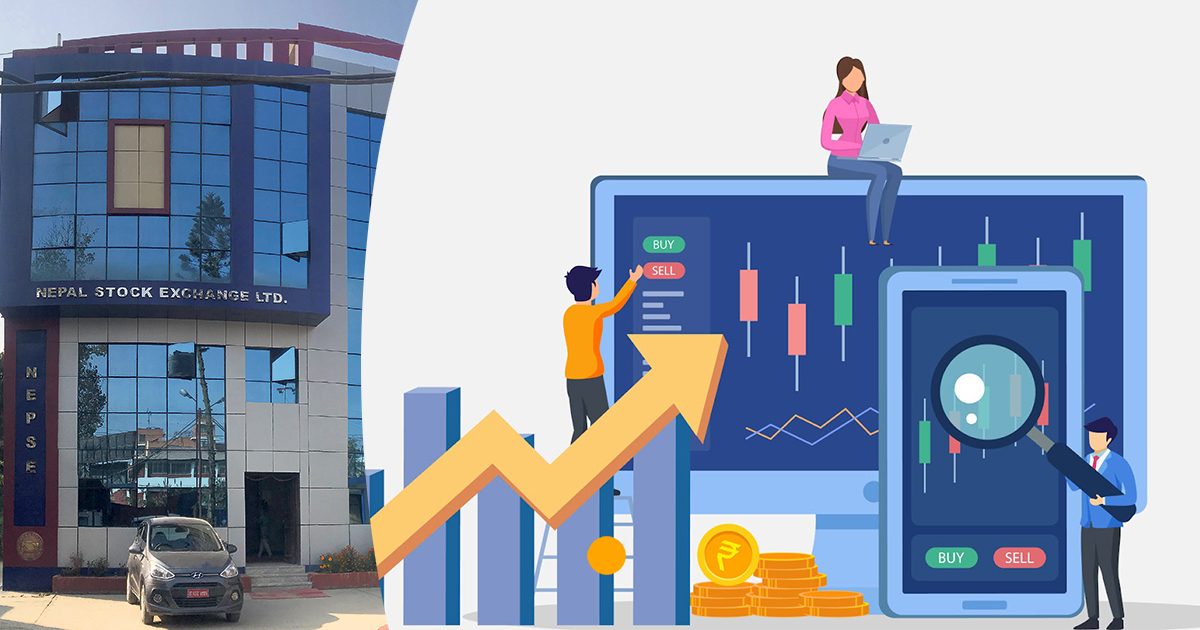Kathmandu: Last Tuesday (July 30), the Nepal Stock Exchange (NEPSE) index closed at 3002.07 points—crossing the 3000 mark for the first time in nearly four years.
This is the highest point NEPSE has reached since 18 September 2021, when it peaked at 3199.03 intraday (reaching as high as 3226). The surge on Tuesday saw NEPSE jump 30.76 points in a single day, creating renewed optimism in the market.
Though NEPSE briefly reached 3000.81 points on 15 August last year, it had been unable to sustain that level. This time, the index managed to surpass that threshold. However, the rally proved short-lived. On Wednesday and Thursday, NEPSE dropped sharply—down 47.93 and 31.50 points respectively—closing the week at 2922.63 points.
Market analysts offered mixed reactions. Some interpreted the decline as a healthy correction, arguing that the overall trend remains upward.
Others expressed skepticism, fearing the market may again fail to sustain gains above the psychological resistance level of 3000. Last year, NEPSE rose 963 points in just 33 trading days, from 2037 to 3000, only to fall back to as low as 2442.57 points in October.
This time, similar patterns have sparked investor speculation on whether NEPSE is set to follow last year’s trajectory or break new ground. Tulsi Ram Dhakal, president of the Nepal Investors Forum, labeled the midweek decline as a “minor correction” and argued that the market is poised for further growth.
“The correction has made the rally stronger and more sustainable. The chances of another sharp correction are low,” said Dhakal. He added that a market that climbs with intermittent corrections tends to be more stable in the long run.
NEPSE had climbed steadily from 2595 points on 26 June to 2982 points by 23 July, gaining 387 points in 20 trading sessions—17 of which saw gains. Though NEPSE dipped 18.44 points on Sunday, it quickly rebounded in the following two sessions before facing the sharp decline on Wednesday and Thursday, which collectively erased 79 points from the index and created uncertainty among investors.
The 3000-point mark has long been seen as a psychological barrier in the market, and NEPSE had attempted to break it multiple times last week, touching intraday highs of 3013.17 on Sunday and 3028.79 on Tuesday. However, the index closed lower on both days.
Adding to the caution, investor sentiment was affected by the central bank’s stance on microfinance institutions. Nepal Rastra Bank recently reaffirmed that it will not immediately lift the dividend cap on microfinance companies. Under the current rule, such institutions cannot distribute more than 15 percent annual dividends without regulatory amendment—a policy now expected to remain until at least mid-January.
Following this development, the microfinance index fell 3.64 percent on Thursday alone. Furthermore, with NEPSE reaching higher levels, many long-term investors who had held shares since the previous peak began profit-booking, contributing to the index’s decline.
Ghanshyam Pandey, president of the Nepal Shareholders’ Association, also categorized the recent fall as a correction rather than a downturn. “After the continuous rise to 3000, a correction was natural. However, external factors like discussions on microfinance regulation contributed to an exaggerated decline,” said Pandey. He believes the market will rebound in the next few trading sessions, bolstered by improving financial statements of banks and favorable macroeconomic indicators.
Market observers also noted that both trading volume and the index declined in the last two sessions of the week. Overall, NEPSE shed 60 points during the five trading days, falling from 2982 to 2922.63. During the same period, trading volume totaled Rs 78 billion.
NEPSE declined in three sessions and rose in two over the week. It fell 18.44 points on Sunday, gained 7.10 on Monday and 30.76 on Tuesday to reach its recent peak, and then dropped 47.93 and 31.50 points on Wednesday and Thursday, respectively.
In terms of trading volume, Sunday recorded transactions worth Rs 26.57 billion—the highest since September 2021. Monday’s turnover was Rs 19.36 billion, Tuesday’s Rs 18.52 billion, Wednesday’s Rs 16.44 billion, and Thursday’s Rs 15.36 billion.
Investors remain cautiously optimistic. Many argue that since trading volume has stayed relatively strong and the market has followed a cyclical pattern, the recent drop should be viewed as a healthy correction. They believe NEPSE still holds potential to climb higher in the coming weeks.



Comment Here